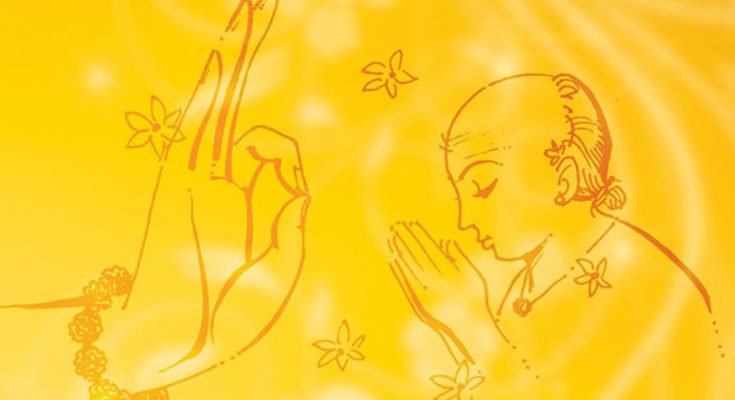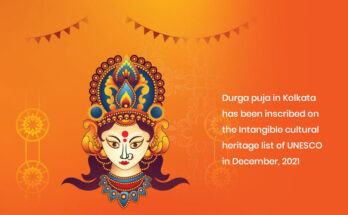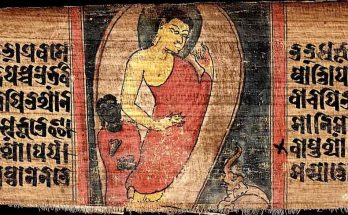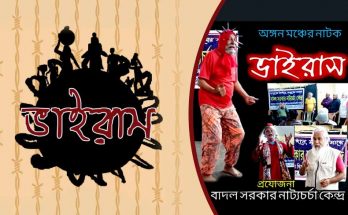Guru Purnima – an important day of Indian society. Image Courtesy- www.thewiire.com
A celebration of festivity of commitment, puja, gratefulness, and adoration for the invaluable instruction of ‘Guru’ is called ‘Guru Purnima’. The event occurs in the month of July. Along these lines, the word Guru implies one who illuminates and demonstrates the genuine way of extreme joy; ‘Paramanand’ or ‘extreme opportunity’ which is called ‘Moksha’ in Hindu religion. Here ‘Guru’ implies a way to avoid indomitable ‘materialism’, ‘desire’, ‘obliviousness’, and ‘social bounding’. The way drives one to a definitive truth of life. The Master or ‘Guru’ removes the darkness of ‘ignorance’, liberates from grips of insatiability and desire, and demonstrates the soul’s best approach to ’freedom’.
Sage Vyasa was the great ‘Guru’ or, one can say the ‘Guru’ of all gurus. He was born on this specific day. He was the writer of the great epic the ‘Mahabharata’ and he also wrote a number of ‘Puranas’. He was likewise one who assembled and settled the Vedic anthems. He even isolated the anthems as indicated by their utilization in the conciliatory rituals and named them as ‘Rigveda’, ‘Yajurveda’, ‘Samaveda’, and ‘Atharvaveda’. His name ‘Vyasa’ itself intends to alter, to separate, or orchestrate in a manner having the central significance in fewer words.
On this day of Guru Purnima, people according to the Hindu religion re-dedicate themselves to achieve ‘human perfection’. This is a day when the pupil discovers an opportunity to love his master who has given him a genuine resurrection. Pupils or disciples on this day feel a genuine resurrection which is loaded with learning, and comprehension of the genuine reality of life. Moreover, it is the turn of the disciple who needs to do his best for his master or ‘Guru’. Disciple gives whatever he can. He communicates his adoration by serving his master. He even guarantees to spread his incredible contemplations. Disciples welcome their master, honour them with blossoms, and garlands on this day. They additionally begin something like school, medical care unit, or do a few foundations in their master’s name to express their devotion.
Read: Explore ‘Oriental Wisdom’ with the golden touch of Indian Institute of Oriental Heritage
The blend of the teacher’s ‘wisdom’ and the vitality of the Disciple go towards making a dynamic and lively culture. Today disciples have a tendency to underestimate the educator and this day helps to restore the parity. It signifies the importance of the master in every step of life. A sportsperson’s success depends upon the ability of the mentor. An artist’s ability is also sharpened by the commitment of the mentor. In the spiritual world, it is the edification of the master that uproots the lack of awareness in the disciple’s brain.
The ‘teacher-student’ relationship concurs fundamental significance in Indian society. The master possesses the same platform given to God. Spiritual development is incomprehensible without the assistance of a master who is ‘Brahmavit’ and ‘Brahmajna’ – built up in the condition of God Realization and has what it takes to grant the subtle spiritual ideas. To find out a person with these stringent capabilities is very tough. Yet India has been honoured with extraordinary sages who have shown up in every era to keep this remarkable tradition continue. It is to this solitary blessing that we offer our regards. Also, as a characteristic of appreciation, we offer ourselves as ‘Guru Dakshina’ and vow to proceed with the custom for eras to come.
We can remember the words of ‘Chanakya’ in this context where he says, “A teacher is never ordinary; he is the maker and destroyer of the world”. So, obviously, a nation cannot rise above the level of its teacher, or mentor, or Guru. The words of ‘Chanakya’ describe the significance of a ‘Guru’ or ‘Teacher’ in human life.
Read: Russian culture – a flavour of astounding creativity with traditional touch
Indian society gives a high place to Gurus. On Guru Purnima, disciples adore them and recollect their life, standards, and incredible teachings. A ‘Guru’ ought to be immaculate in considerations, words, and activities, he should be a pioneer, a guide, an extraordinary source of motivation and information. He ought to be qualified and ready to ‘teach’ and learn throughout life. He ought to have the capacity to help his followers in developing suitable qualities. According to the Hindu religion, the best, easy and prompt way to understand and have the knowledge of the world is to make ‘Guru’.
A socio-religious tradition persisted there from the ancient period of Lord Rama and Lord Krishna to choose a master or ‘Guru’. They used to stay with their ‘Guru’ and learn his teachings and ideology in such an environment that used to be in the lap of nature. They used to learn various mysteries through the help of nature. Ruler Rama and Lord Krishna both were disciples of extraordinary ‘Gurus’. Rama was the disciple of the eminent ‘Sage Vasistha’, who was also an incarnation of ‘Lord Brahma’ himself according to Hindu religious explanations. Krishna was the disciple of ‘Sage Sandipani’. So, both Rama and Krishna obtained religious teachings staying at their Guru’s ashramas.
Another example we can find in Bengal which also advocates the ‘Guru-Sishya’ or, ‘teacher-student’ relationship is of Swami Vivekananda who rocked the world starting from America. He also got teachings from his ‘Guru’ Shree Ramakrishna Paramahamsa, a great devotee of the Hindu religion. Shree Ramakrishna Paramahamsa used to maintain a very low profile lifestyle, but he had the spiritual power of optimum magnitude.
Many people said that Shree Ramakrishna transferred his spiritual power to ‘Narendranath’ before his death, and with that enormous spiritual power ‘Narendranath’ manifested the Hindu Religion all over the world later on and became famous as ‘Swami Vivekananda’. These stories prove the importance of a ‘teacher’ or a ‘Guru’ in the life of an individual.






Wow, incredible weblog layout! How long have you been running a
blog for? you make blogging look easy. The full glance of your site is
wonderful, let alone the content!
Hello, I check your blog like every week. Your story-telling style is witty, keep doing what you’re doing!